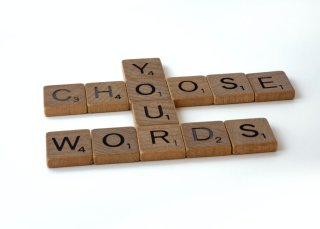
Web Content Readability Best Practices
Most of the content we consume on the web is written text. But reading on the web is very different from sitting down with a novel — or even a newspaper. Here’s why focusing on readable content is important for capturing, communicating with, and retaining your web visitors.
The most coveted award in web writing is for Sesquipedalian of the Year, awarded to the content creator who has been deemed the most capable of constructing complex, overwrought, erudite, overladen, and herculean sentences placed in formidably cumbersome paragraphs of dense prose.
Just kidding. When we read on the web, we want content that is clear, concise, and easy to understand.
Web readers are task-oriented, and have specific goals in mind when looking at your website content. In order to find what they need, they ruthlessly scan, skim, and scroll. And if they can’t find what they need quickly, they leave..
How People Read on the Web
Forbes compiled statistics on how people use the web in 2023. These statistics shed light on why clear and readable content matters:
- Quickly: Users form an opinion about a website in a fraction of a second.
- On their phones: In North America, 51% of web traffic is on mobile devices.
- Minimally: People spend an average of six seconds looking at written content.
- Ruthlessly: They are pursuing the content they need and resisting what you’re pushing to them. Users spend an average of six seconds looking at the main navigation.
- Unevenly: People scan page content in an F-shape, with more attention paid to the top and left sides, spending 74% of time in the first two screenfuls of content. But they do scroll–as long as the content seems relevant.
What is Grade Level Readability, and Why Does it Matter?
Readability is a measurement of how hard it is to read a passage of writing. There are many different tools to assess how complex a piece of writing is, and these methods were developed to do everything from improving the readability of news articles to helping children learn to read. Most methods measure factors like word length and average sentence length.
Generally speaking, we suggest aiming for an eighth grade reading level. This is not because we assume our content is being consumed by eighth graders, but because we want our informational content to be easy to understand, not complex. On top of that, the National Center for Education Statistics found that over half of US adults read at an eighth grade level or below.
To check readability for key pages or content, we recommend using a readability checker, like the great, free HemingwayApp, to analyze text.
Why You Should Care About Readability
We want visitors to our websites to understand what we’re communicating with ease, not difficulty.
“But our website visitors are all highly educated people!” you say. That’s wonderful. But that doesn’t change the fact that smart people also don’t read every word on a website, especially if the text is dense, extensive, and presented the same way you would present printed materials. Even in fields like law and medicine, the evidence is clear that people prefer plain language.
Readability is an important way for an organization to convey their commitments to accessibility and inclusivity. We want to reduce cognitive load for site visitors so they can focus on thinking about and acting on our calls to action, not struggling to understand what we’re trying to say. This means reducing jargon and insider language, not assuming that our readers know industry terms.
Here Are Some Other User Types to Consider:
- ESL audiences
- Users relying on mobile devices and poor internet connections
- Individuals with chronic and/or situational disabilities
- Readers with dyslexia or dyscalculia
- In higher education, first-generation prospects, students and their parents, who may have less familiarity with academic jargon
If users are using translation software or browser plug-ins to translate our site content, we want to write content that is clear and direct, not full of jargon and convoluted language that will get scrambled in translation.
Readability Is About Numbers and Data, Too
Sometimes, our web content is more about numbers than words. As we design and write number-based information, we need to consider how to make data simple to understand, especially for users with low numeracy or dyscalculia.
The UK’s DWP Accessibility Manual offers some guidance on presenting numbers and data, including:
- Round to the nearest whole number
- Avoid decimals unless it’s money
- Use sentences to add context about numbers
- Use text to explain what the numbers in tables and grids mean
Whether it is information about health care costs or paying for college, we want users to easily understand complex sets of numbers, especially when it comes to major financial decisions.
The Importance of Good Headers
Headers and subheaders with clear, descriptive labels break up text, label and organize content, and create hierarchy as they guide the reader through the page.
Headers matter for search engine optimization (SEO), they matter for accessibility, but they’re also a critical part of how people read on the web — skimming and stopping to read headings to see if the section contains the content they’re looking for.
Think of your headers as signposts guiding your user through the page content. What key words might make them stop scrolling because they have found what they’re looking for?
Reminders for Improving Readability
The Center for Plain Language has helpful guidance on improving your writing, centered around five steps in wording, structure, and design. As you work to make your content more readable for website visitors, here are some areas to focus on:
- Use active voice
- Verbs, not nouns
- Avoid prepositional phrases
- Cut unnecessary adjectives and adverbs
- Eliminate redundancy
- Use bullets
- Shorten sentences
Readability Resources:
http://www.plainlanguage.gov
http://centerforplainlanguage.org
http://www.hemingwayapp.com